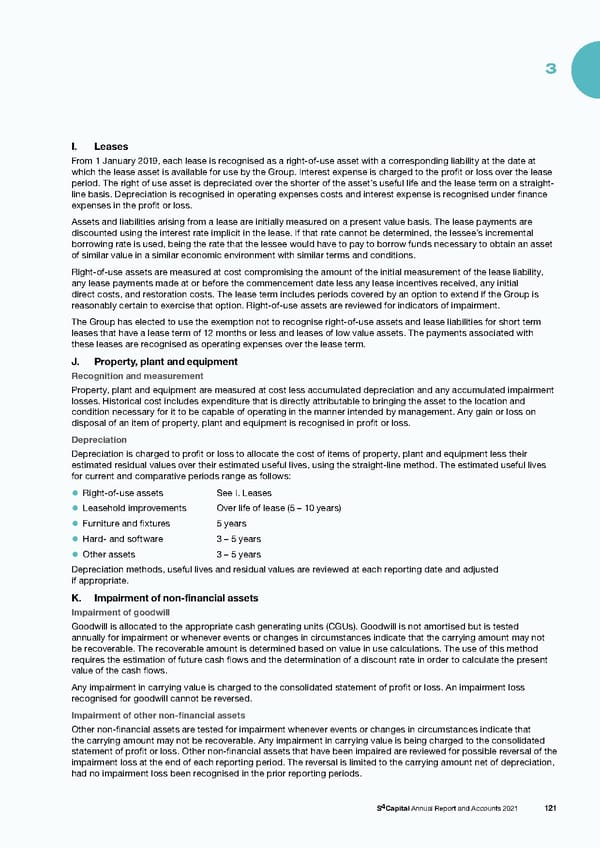3 I. Leases From 1 January 2019, each lease is recognised as a right-of-use asset with a corresponding liability at the date at which the lease asset is available for use by the Group. Interest expense is charged to the profit or loss over the lease period. The right of use asset is depreciated over the shorter of the asset’s useful life and the lease term on a straight- line basis. Depreciation is recognised in operating expenses costs and interest expense is recognised under finance expenses in the profit or loss. Assets and liabilities arising from a lease are initially measured on a present value basis. The lease payments are discounted using the interest rate implicit in the lease. If that rate cannot be determined, the lessee’s incremental borrowing rate is used, being the rate that the lessee would have to pay to borrow funds necessary to obtain an asset of similar value in a similar economic environment with similar terms and conditions. Right-of-use assets are measured at cost compromising the amount of the initial measurement of the lease liability, any lease payments made at or before the commencement date less any lease incentives received, any initial direct costs, and restoration costs. The lease term includes periods covered by an option to extend if the Group is reasonably certain to exercise that option. Right-of-use assets are reviewed for indicators of impairment. The Group has elected to use the exemption not to recognise right-of-use assets and lease liabilities for short term leases that have a lease term of 12 months or less and leases of low value assets. The payments associated with these leases are recognised as operating expenses over the lease term. J. Property, plant and equipment Recognition and measurement Property, plant and equipment are measured at cost less accumulated depreciation and any accumulated impairment losses. Historical cost includes expenditure that is directly attributable to bringing the asset to the location and condition necessary for it to be capable of operating in the manner intended by management. Any gain or loss on disposal of an item of property, plant and equipment is recognised in profit or loss. Depreciation Depreciation is charged to profit or loss to allocate the cost of items of property, plant and equipment less their estimated residual values over their estimated useful lives, using the straight-line method. The estimated useful lives for current and comparative periods range as follows: • Right-of-use assets See I. Leases • Leasehold improvements Over life of lease (5 – 10 years) • Furniture and fixtures 5 years • Hard- and software 3 – 5 years • Other assets 3 – 5 years Depreciation methods, useful lives and residual values are reviewed at each reporting date and adjusted if appropriate. K. Impairment of non-financial assets Impairment of goodwill Goodwill is allocated to the appropriate cash generating units (CGUs). Goodwill is not amortised but is tested annually for impairment or whenever events or changes in circumstances indicate that the carrying amount may not be recoverable. The recoverable amount is determined based on value in use calculations. The use of this method requires the estimation of future cash flows and the determination of a discount rate in order to calculate the present value of the cash flows. Any impairment in carrying value is charged to the consolidated statement of profit or loss. An impairment loss recognised for goodwill cannot be reversed. Impairment of other non-financial assets Other non-financial assets are tested for impairment whenever events or changes in circumstances indicate that the carrying amount may not be recoverable. Any impairment in carrying value is being charged to the consolidated statement of profit or loss. Other non-financial assets that have been impaired are reviewed for possible reversal of the impairment loss at the end of each reporting period. The reversal is limited to the carrying amount net of depreciation, had no impairment loss been recognised in the prior reporting periods. S4Capital Annual Report and Accounts 2021 121
 s4 capital annual report and accounts 2021 Page 122 Page 124
s4 capital annual report and accounts 2021 Page 122 Page 124